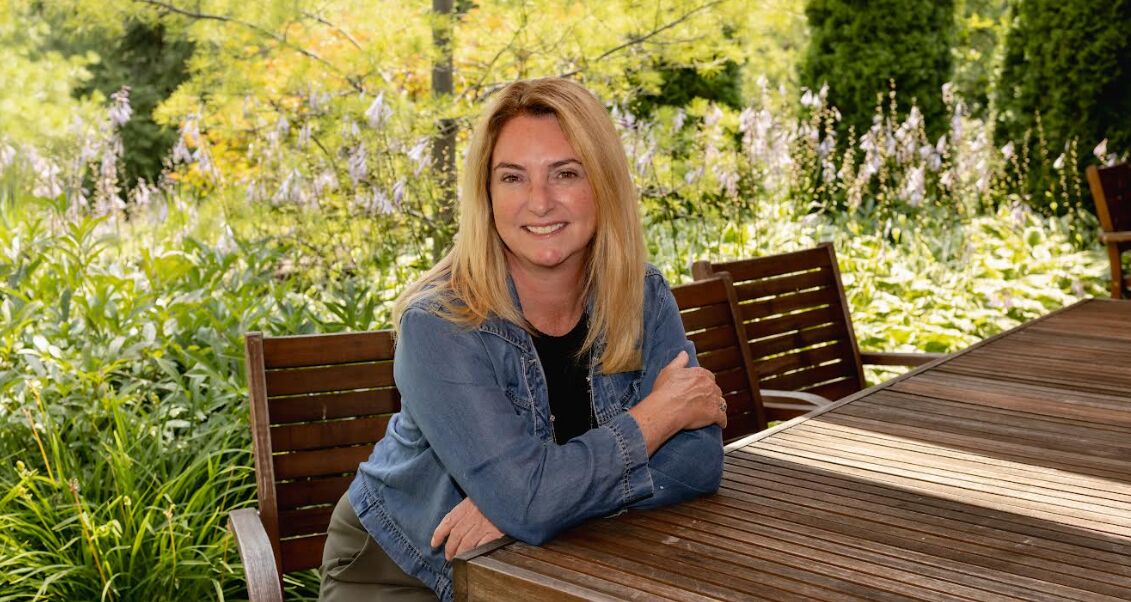Information ‘vacuum,’ government secrecy drives charitable sector's fight against Alternative Minimum Tax
Why It Matters
There are a variety of opinions on the proposed charity-related changes to the Alternative Minimum Tax. Yet the sector’s advocacy was united. Why?

Why are charities fighting against a proposed law that would see wealthy Canadians pay more tax? This is the third of a three-part series exploring the sector’s advocacy against the Alternative Minimum Tax. Read the first and second stories.
On their proposal to reduce two donation incentives for high-income Canadians, the federal government received one clear message from the charitable sector: This will hurt us.
“Stakeholders from the charitable sector strongly oppose the Alternative Minimum Tax,” reads an AMT consultation summary prepared in September 2023 by Department of Finance staff, obtained through a Freedom of Information Act request.
“Stakeholders argue that the reform will significantly impact Canadian charities, as the AMT will reduce the tax incentive to donate for a small number of high-income donors who make exceptionally large donations.”
But despite the uniform message the government received on the proposed AMT reforms — a federal effort to increase tax fairness — some charities felt differently.
MakeWay Foundation, a national public foundation, said they support the government’s proposed policy changes, arguing the changes will increase tax fairness at a time of growing inequality.
In a policy brief, the foundation said the proposed changes will mainly impact large charities that draw most of their income from the government, not private donors.
Clayoquot Biosphere Trust, a rural B.C.-based community foundation, was also unconcerned by the government’s proposal, believing it wouldn’t materially impact their fundraising.
“I don’t think [our donors] are driven by tax incentives. Rather, [they] are connected to this special place and the work we are doing. They’ll find a means to donate to causes that matter to them,” said Rebecca Hurwitz, the foundation’s executive director.
Why, then, did the government hear just one voice? And why did charities large and small push back so strongly against the reforms together?
Fear of a drop in significant gifts
Charities nationwide that advocated against the AMT changes were united by a deep fear of a drop in donations at a difficult time for charitable giving.
In 2021, the number of Canadians claiming a charitable donation tax credit declined for the eleventh year in a row, dropping from a high of nearly six million donors in 2005 to fewer than five million in 2021, according to Statistics Canada.
With everyday donor gifts declining, charities have increasingly relied on large gifts from high-income donors — the segment targeted by the federal government’s reforms.
While federal data suggests changes would most significantly affect charities with more than $10 million in annual revenues, smaller organizations were fearful, too.
Smaller charities have less wiggle room to make up for lost donations, said Sandra Sullivan, executive director of the Collingwood, Ont. based Hospice Georgian Triangle Foundation, a charity with $1.8 million in revenues in 2022 that advocated against AMT change.

CAGP didn’t consider other options
In their advocacy on this issue, many charities followed the lead of the Canadian Association of Gift Planners, an association of fundraisers, accountants, lawyers and financial professionals who help donors plan their philanthropy.
During the government’s consultation on the topic in September, CAGP rallied 180 organizations to sign an open letter arguing against the proposed AMT changes.
But despite the range of sector opinions on the subject, the volunteer members of CAGP’s government relations committee who prepared the letter did not consult with other charities on its contents nor consider any position other than opposing the government’s plan.
This approach made sense, said Brad Offman, a sector consultant and longtime CAGP committee member, given members’ day-to-day engagement with charities and donors nationwide and their deep knowledge of how donation incentives affect giving.
But Thomas Malleson, an associate professor at King’s University College in London, Ont. who studies inequality and taxation, viewed it differently.
“The CAGP’s decision not to do any meaningful consultation with the charity sector or social justice organizations shows that they don’t really care what poor-people advocates think,” they said.
“They had made their decision from the get-go: they would oppose any government changes that threatened to make rich people pay higher taxes.”
An information “vacuum”
Sources said that the lack of government engagement with the sector on this issue contributed to the strength of the sector’s AMT advocacy.
“Some of what concerns us is that this is the government rolling back tax policy that has been in place for decades — and doing that without any consultation,” said Ruth MacKenzie, CEO of the Canadian Association of Gift Planners.
In addition, the sector prepared their AMT consultation submissions lacking good data on how the proposed changes would impact giving.
The Department of Finance had done this analysis but refused to release it, said Bernadette Johnson, Imagine Canada’s advocacy director.
Emails between department staff discussing this analysis, obtained through a Freedom of Information Act request, are nearly entirely redacted, and a spokesperson for the government would not comment on why the government would not release the figures.
Not knowing the severity of the donation drop, Imagine Canada felt the need to fight the proposed changes, said CEO Bruce MacDonald.
In September, Imagine Canada mobilized charities to lobby against the proposals during a Hill Day and supported more than 1,200 organizations to send letters to the government advocating against the changes.
“There may have been a different sectoral response had we had transparency, conversation, discussion, and been part of the solution,” he said.

Early estimate of donation drop sparks concerns
Lacking government data, CAGP’s government relations committee developed estimates of how the proposed changes would impact donations.
In a September newsletter, they warned that “as much as one-third of the $11.8 billion of annual charitable giving by Canadians could be negatively impacted by [the AMT] changes.”
On LinkedIn, several shared this message, urging others to sign the association’s open letter.
The figure was also cited in an op-ed written by MacKenzie and MacDonald, published by the Globe and Mail.
But in late November, the C.D. Howe Institute published a detailed estimate of their own, drawing a much different conclusion.
The think tank estimated the two proposed donation incentive reductions would result in a four per cent decrease in donations. In 2021, this would have amounted to a donation drop of $500 million — about seven times less than the CAGP warned was at risk.
Asked about the discrepancy, MacKenzie said C.D. Howe’s analysis is likely much more accurate.
The one-third figure they cited was an estimate of the share of donations that are large enough that, had they been taxed using the new AMT calculations, could have been impacted by the proposed policy, she said.
“We’re not saying necessarily, the AMT goes in place, and that number of donations are going to dry up,” MacKenzie said. “We were just trying to get across a message.”
Donor pressure?
Donor’s plans to reduce their giving if the new AMT became law also united the sector’s advocacy, according to interviews with association and foundation executives.
After the budget announcement, donors called and emailed some of Canada’s largest charities, including the BC Children’s Hospital Foundation and some Alberta community foundations, saying they would reduce or space out planned multi-year gifts if the AMT changes went through.
Some donors also directly asked charities to engage in advocacy against the proposed changes, according to a community foundation executive, who asked to remain anonymous, fearing professional repercussions.
“The sector is being weaponized by high net-worth individuals,” he said. “They’re saying, ‘Hey, you guys need to advocate for your very wealthy donors, or else we’re not going to give to you anymore.’”
But Lorne Jackson, board president of the Canadian National Christian Foundation, a Christian donor-advised fund foundation, said there was no weaponizing of the sector — it’s just factually accurate that donors will give less if donation incentives are reduced.
“I wish I could say they’re altruistic and that they’re really wanting to be generous. But…if you took the tax part away, they’d be a lot less generous,” he said.
A ‘sense of urgency’
Part of what also helped to propel the sector’s advocacy on the AMT was a “sense of urgency” that the government would implement the changes in 2024 if no action was taken, said MacDonald.
Though core funding arguably impacts more charities, he added that it’s harder to get organizations to advocate for it because it’s been a concern for 30 years.
Others were galvanized by an urgency of a different sort, fearing that if they did not push back firmly against the changes, the government would further reduce donation incentives.
“Our government is looking for money,” said Jackson. “If they take this away with the AMT, that will only be the first step…of taking away the capital gain tax advantage.”
Under Canada’s current gift incentive regime — one of the world’s most generous, Canadians pay no capital gains on stock donations and gifts of several other types of securities.
Should the AMT changes pass, high-income Canadians, calculating their taxes using the AMT method, will be required to pay 30 per cent of the capital gain on donations of qualified securities.
Pro-AMT charities didn’t mobilize
The sector’s advocacy on the AMT was also largely united because charities who supported the proposed tax changes or were indifferent didn’t speak up.
Though MakeWay applauded the government’s plan, the foundation did not submit a letter responding to the federal consultation on the subject.
“It was a matter of timing and capacity. The consultations were finished by the time we could take an informed position on the issue,” said Todd Jaques, the foundation’s policy director.
The same was true for Clayoquot Biosphere Trust, which focused more advocacy energy on the sector’s efforts to increase granting to non-qualified donees, said Hurwitz.
Other organizations, including the McConnell Foundation, Trottier Family Foundation and the Small Change Fund, chose not to take a position on the issue owing to capacity constraints or a belief the changes wouldn’t affect them much, according to staff.
What’s next?
The AMT changes, including the proposed donation incentive reductions, are one of the government’s signature tax fairness policies, first promised during the 2021 election campaign.
Yet in 2023, they delayed implementing these promises, allowing high-income Canadians at least one additional year to maximize existing credits and deductions.
MacDonald said the sector bears no responsibility for this — Imagine Canada’s advocacy was “surgically” focused on donation incentives, not other aspects of the AMT policy.
Moreover, he said other sectors were bending the ear of the government, asking for amendments on their AMT issues.
“Why would the charitable sector sit by silently and allow itself to get hurt?”
In November’s 2023 Fall Economic Statement, the government said it will proceed with the AMT changes “as modified to take into account consultations and deliberations since their release.”
What that means for the charitable sector will likely not become apparent until the release of Budget 2024 this March, according to experts.
